“Until one has loved an animal, a part of one’s soul remains unawakened.”
– Anatole France
There is nothing in this world to compare to the unconditional love we receive from our animal companions—it is a welcome change from the conditional love we’re often told we must accept from individuals and society at large. When one of the few sources of good in our world dies, it is absolutely devastating. On top of that hardship, as many pet parents know from experience, that loss is often trivialized. We are made to feel as if our beloved companion was insignificant and replaceable, a toy or an accessory which once broken, can be easily discarded. Many of us have experienced criticism or mockery on the level of our grief, felt as though we couldn’t talk about the loss openly, or were unable to take the time we needed to process the pain of their death. This can lead to delayed and disenfranchised grief, both of which have lasting effects on mental health, the ability to deal with future losses, and daily quality of life. But for many of us in the LGBTQIA+ community, our pets are our children. This was a difficult article for me to write, because it is rooted in a deeply personal experience. My hope is that by sharing my loss, I can help other pet parents know that they are not alone in their experiences and that deeply grieving the loss of an animal is completely normal and to be expected of such loyal, loving companions. I experienced this in full force when Sasha died in April of 2021.
Sasha was a hairless Chinese Crested Dog who was rescued from a puppy mill at two years old and came into our little family shortly after that. When we brought her home, she was afraid of everything, including us, and it took a very long time to earn her trust. Her health suffered from the conditions of her birth and the environment she was forced to live in for the first two years of her life. We soon learned that she had epilepsy as well as a congenital heart defect, which had gone undiagnosed and untreated until we adopted her. Quickly our daily routines shifted to revolve around her: medicine at specific times, taking her outside with us since she couldn’t be alone due to risks of her seizures, I even cooked her fresh food from scratch to meet her specific dietary needs. We spent ten wonderful years with her, but at twelve years old, her health started to decline, and her heart became dramatically enlarged as she entered congestive heart failure, exacerbated by pulmonary hypertension.





She was in an out of the emergency vet during the first few months of 2021, which was extra stressful since we couldn’t be in the building with her due to COVID restrictions. Towards the end, she spent 48 hours under their care, but she eventually got to come home, though we were still closely observing her. I believe that she knew she was dying. That last week she refused to eat but tried her hardest to act like her normal, spunky self for our sake. Late one night as we were watching some television in bed, she started hyperventilating and didn’t stop. We rushed her to the emergency vet once more, an awful dread creeping into our hearts as we feared this would be the last time. I still remember very vividly the extreme nausea and chest pain I felt, it was as though every cell in my body understood that the hardest moment of my life was coming. The vet techs checked her in and put her in an oxygen chamber and we waited in my car for several hours in a dark, cold parking lot, but she was not improving. We were finally allowed to be with her when we made the heart wrenching decision to end her life. Somehow, I did not vomit, though I felt like I was turning inside out.
We watched tearfully as they wheeled her in on top of a table. Though she had her baby blanket to lay on, the one I had sewed myself before we even brought her home from the rescue all those years ago, she was trying desperately to jump off the table and get to us. I cannot imagine how terrified she was in that strange place with strange people, feeling as awful as she must have felt. They gave us some alone time with her before the drugs would be administered. We held her and spoke to her and kissed her and sang her all the songs we had made up just for her over the years for one last time. We cried a long time before we told them they could come back in and begin the injections. Then in just a few heartbeats, she was gone, her eyes already starting to dull, and her little body growing still. We cried more and stayed in the room, clutching her, for a long time. I still did not vomit, though I wanted to. My wife kept repeating “I don’t want to exist anymore.” I wordlessly agreed. Our Sasha, our beloved daughter, our whole world, was dead.
Finally, I told them they could come back in and take her. They would wrap her in her blanket and put her in a tiny cardboard casket for us so we could bury her in her yard. Though they asked if we wanted a lock of her hair and her paw prints taken, they did not do either, and in our fresh, raw grief, we forgot about it until it was too late. Neither were we given any information about pet loss aftercare or bereavement support groups, though many such groups exist. It was 5 am when we returned home with her little body, we put her on the table in my craft room where she and I had spent many hours together at my sewing machine, playing with fabric scraps, or lying in the sunbeams provided by the sliding glass doors. I called off work and we tried to get a little sleep. In the late morning, we decided upon burying her in her favorite place in our yard and we began to dig. Each shovel full of dirt and rocks felt like an impossible weight, but somehow—we kept going. When we placed her inside her grave, we offered many of her toys and clothes and treats to the earth as well. Like a tiny Pharaoh, we wanted to provide her with everything she might need. We cried again as we sat on the porch steps, regarding the upturned earth that now held her close because we could not. Then we started planning her garden, picking out flowers of purple and pink, as well as a small concrete Chinese lion-dog statue to guard her grave, its stony face frozen in a fiercely protective growl.
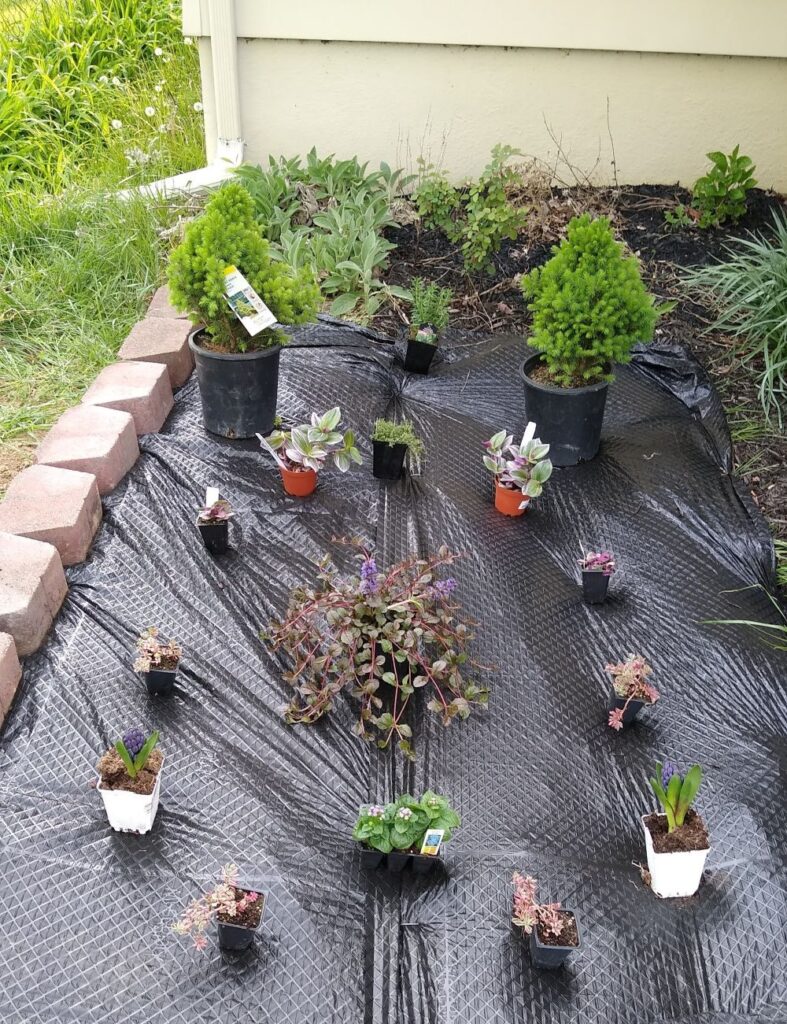
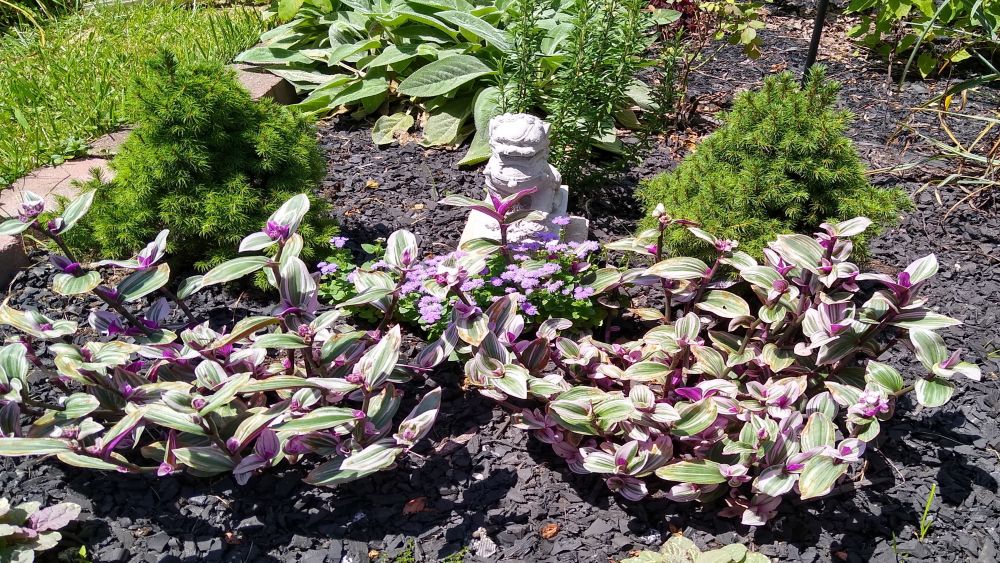
After her death, I received major backlash from coworkers about taking time off because she was “just a dog.” Even people who had previously described their companion animals as their kids commented to me and others about how it was too much time. I took a week off anyway. The day I came back to work someone had the nerve to tell me to smile and then ask if we were going to get another dog. Let me tell you—I raged. Like she was replaceable, a commodity that once broken should be discarded and forgotten for the next new thing. No. She was my daughter. She was one of the only sources of comfort when my grandfather died during the initial COVID lockdown. She was the glue that held our little family together during the tough times. She was unconditional love (well, one condition—that there be treats). No one at work ever asked me that again.
I think what makes me so angry even now was that I almost let them win. When I talk about her to new people, I am tempted to simply call her my daughter because then I know that her death will not be trivialized. This experience shaped me just as I was entering the education required for my career as a funeral director. The treatment I received will forever remind me to never downplay a death. No matter who has died, I can never know what that relationship means to someone else. Many funeral homes, including the one where I work, offer pet loss options, ranging from simple cremations to full blown calling hours and funeral services. This is becoming more widely available as deathcare begins to encompass the entire family and funeral professionals recognize the need for a more holistic approach to our practice of caring for the individuals, families, and communities we serve. Even if you decide to care for your companion animal yourself, like my wife and I did, I want you to know that there are lots of things you can do to memorialize them beyond their burial or cremation.
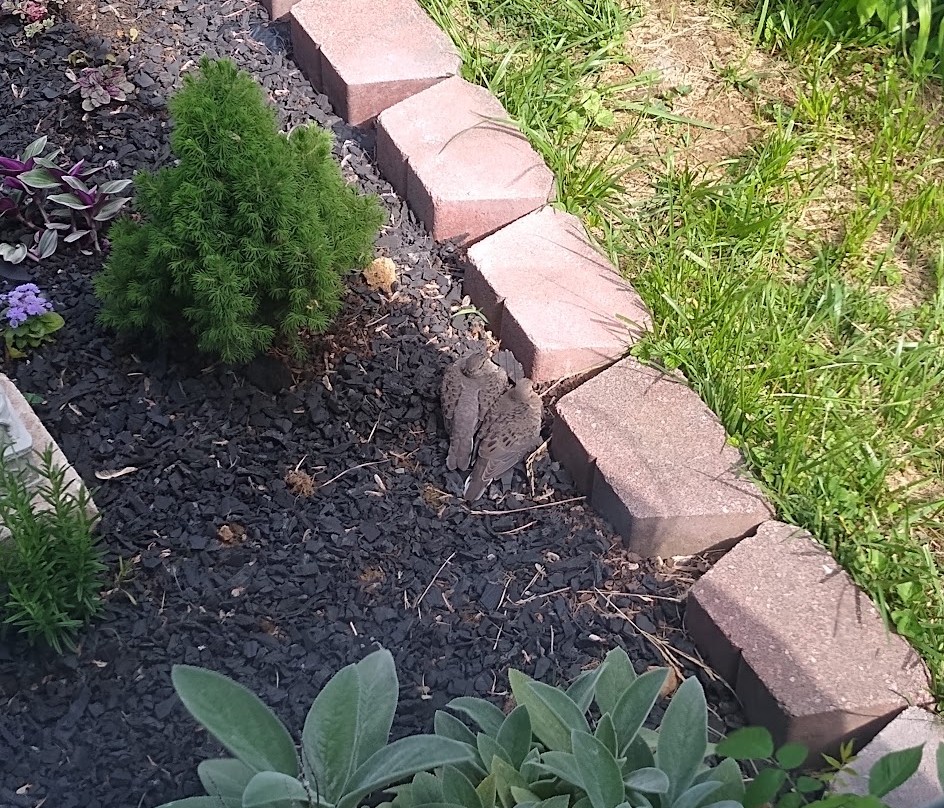
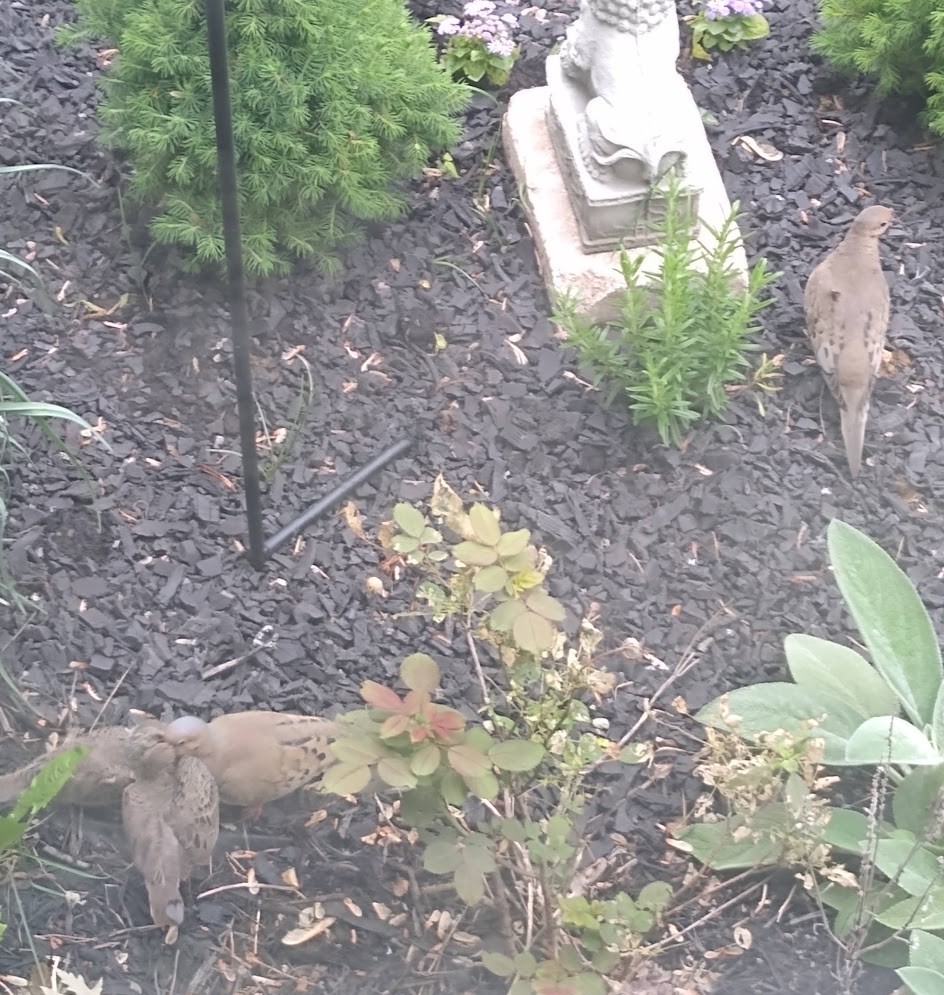
In our case, we put our grief into motion by planning and planting Sasha’s memorial garden. We spent several weeks researching what kinds of plants we wanted and plotting out the design. We selected a wide variety of perennial plants, because we wanted the symbolism of them returning every year to be a part of Sasha’s memory. We also planted two small pine trees and a rosemary bush, the rosemary representing all the meals I had cooked for her over the years. A few months after planting, we had the good fortune to watch a pair of fledgling mourning doves take up residence in the bushy ground cover we’d planted. We watched their parents bring them food and teach them how to fly slowly over the course of several weeks, each time we saw them we couldn’t help but think that at least something good had come from all our sadness. Spending time maintaining Sasha’s Garden as the days, weeks, and months went on became a way for us to still care for her, to be close to her as we began moving our relationship with her from one of presence to one of memory.
Later in the year, I began keeping an altar for her as well, taking some inspiration from the beautiful tradition of Dia de los Muertos, where an ofrenda is built to display the portraits of deceased loved ones, and offerings such as their favorite food and drink, as well as flowers and memorabilia are placed there in remembrance. With Sasha being a hairless dog, I liked to imagine her as a distant cousin to the adorable Xoloitzcuintle, another hairless breed native to Mexico and named for the Aztec god, Xolotl, who was depicted as a dog-headed man that helped to guide the souls of the dead. For my little psychopomp, I put out colorful dog toys, bowls of basmati rice, a sweet potato, some beautiful flowers, and lit candles around both her photos and her grave. I also took to listening to Remember Me from Disney’s Coco when I was missing her the most, it is a beautiful song, and it always gives me a good cry when I need one.
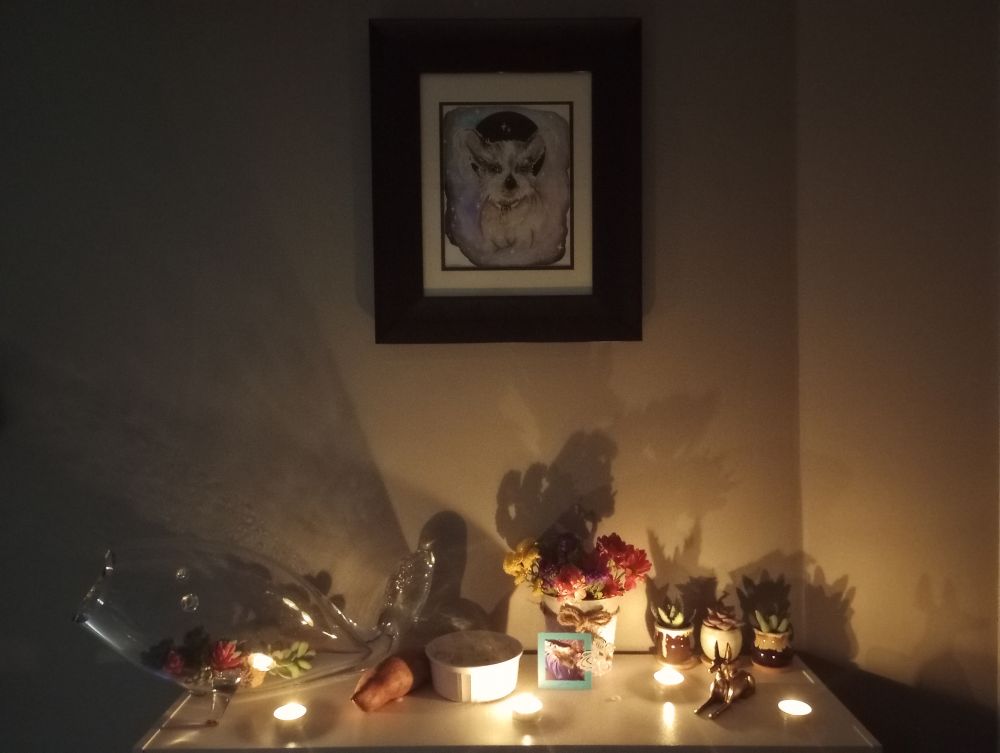
If you don’t have a spot in your yard to bury your animal companion, there are more and more spaces being allocated for pet burials, either in their own special cemeteries or in pet sections of larger, more traditional cemeteries. There is a rich history and tradition in pet cemeteries, as our relationship with our companion animals evolved, so did the ways we sought to memorialize them. During the Victorian Era, when human memorialization became less about what churchyard we would be buried in and more about how we could incorporate the dead into our lives by spending time around them in the beautiful settings of rural or garden cemeteries, we started to see pet cemeteries spring up as well. These cemeteries, like Hyde Park Pet Cemetery in London, weren’t without controversy at first. Many people at the time were searching for ways to honor their deceased animal companions that resonated with how they would honor any beloved member of their family. Monuments range from the simple to the extravagant, such as Lord Byron’s tribute to his Labrador, Boatswain, a large stone column topped with an intricately carved urn and emblazoned with Byron’s signature brand of prose. It culminates with a sentiment that all pet parents understand, “…to mark a friend’s remains these stones arise; I never knew but one—and here he lies.”
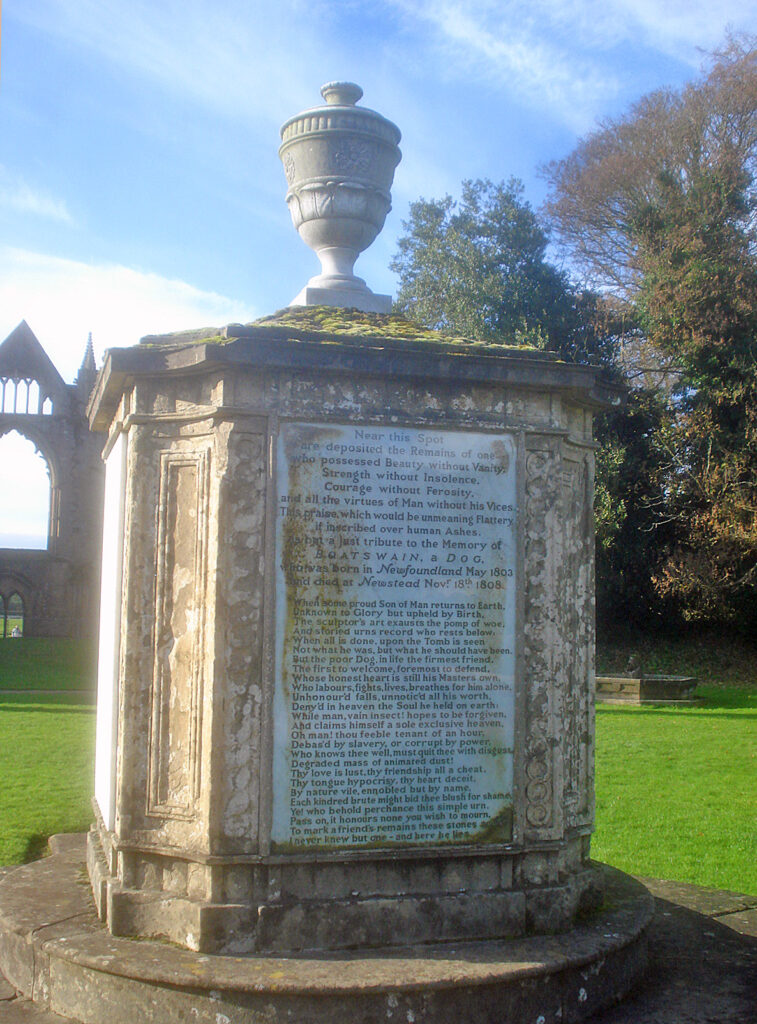

As elegant as Boatswain’s epitaph may be, most animal companions’ memorials were much simpler, often featuring just their name, or perhaps a short sentiment such as “A noble cat.” In his recent book, Faithful Unto Death: Pet Cemeteries, Animal Graves & Eternal Devotion, author and artist, Paul Koudounaris shares the story of a cat named Dewey, whose grave at Pine Ridge Pet Cemetery in Dedham, Massachusetts, may arguably be the most famous pet memorial out there. The small headstone bears two decorative scrolls on the top, along with Dewey’s name, his dates, 1898—1910, and an inscription that tugs at the heartstrings. “’HE WAS ONLY A CAT’ But he was human enough to be a great comfort in hours of loneliness and pain.” Dewey’s grave has been an internet sensation over the past decade, but it has been recognized as significant for far longer than that. Featured as telling a “story of real love” in the Boston Globe just a few days before the death of Mrs. S. E. Stuart, Dewey’s mom, in 1915, Dewey’s headstone has been celebrated for over a century. Koudounaris, himself a cat parent and prolific chronicler of death and memorialization of humans as well as animals, muses, “There is perfection to the words […] Humble wording cannot hide the epitaph’s hubris, it is clear that whoever commissioned the stone considered Dewey to be considerably more than ‘only a cat.’ The sentiment strikes an emotional chord with anyone who has ever taken solace in an animal. Who among us has not known one like him, an animal companion that is something far greater, one with the power to work magic on the human heart?”
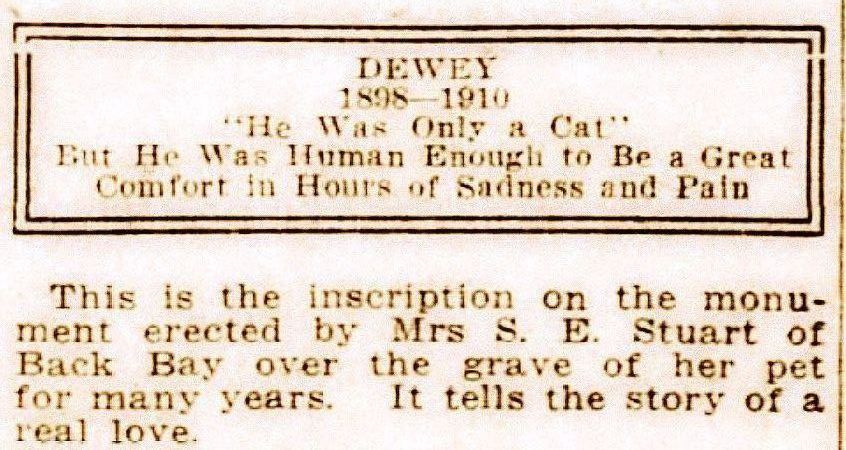
If burial is not your style, pet cremation services are on the rise, with many options for memorialization beyond inurnment, which simply means placing the cremated remains into an urn. Cremation jewelry is now widely available and any piece that could be used for our human family members may also be used for our animal companions as well. There is the option to scatter their remains, of course (though you should always get permission from the property owner before doing so), or to place them in a pet mausoleum or columbarium if you desire a more permanent place to visit. As with humans, there are services which allow you to send in all or a portion of your beloved pet’s cremated remains to be incorporated into blown glass sculptures, smooth kiln-fired stones, or even sparking diamonds. Although we were unable to obtain Sasha’s paw or nose prints, if you have your animal’s prints there are some places out there that will put them on a variety of beautiful memorial items like jewelry and ornaments. If you know that your pet is reaching the end of their life, it is much easier to get good prints and sections of hair in the comfort of your home, many pet hospice programs will assist you with this as part of their care.
When creating a memorial service for a beloved animal companion, there are a plethora of songs, poems, and other readings to choose from. There is of course the classic Rainbow Bridge poem by Edna Clyne-Rekhy, and many others, such as I Loved You Best by Jim Willis and They Will Not Go Quietly by Linda Barnes. All these pull at the heartstrings, but I think my favorite is the poem “Beau” by actor Jimmy Stewart, which is an ode to his faithful dog of many years and whose reading of said poem brought even notorious jokester Johnny Carson to tears. Many songs would be fitting for a pet memorial service, such as Shannon, by Henry Gross, about his friend’s loss of their beloved Irish Setter of the same name, as well as Old Grey Dog by Jimmy Scott, Soon You’ll Come Home from All Dog’s Go to Heaven, or the iconic ASPCA anthem, Angel by Sarah McLachlan.
When I recommend music for any funeral, one of my go-to songs is Keep Me in Your Heart by Warren Zevon (or the cover by Eddie Vedder if you prefer a more modern sound), the song was written by Zevon after being diagnosed with inoperable lung cancer and being told he had a mere three months yet to live. In the face of this diagnosis, he created and released his final album, The Wind (2003), the final song of which is Keep Me in Your Heart. Though I have listened to the song many times and even read the lyrics out loud at a few graveside services, the line that always gets me is “Sometimes when you’re doing simple things around the house, maybe you’ll think of me and smile.” It’s a gut punch in the best way possible and to me represents all those quiet moments when it is just you and your animal companion, who often wants nothing more than the pleasure of being by your side. As Dr. Koudounaris said in an interview about his first visit to a pet cemetery, “It’s like losing a piece of yourself that you will never get back. Because a pet really is an extension of us. A pet becomes a part of us. And when they die, you are losing a piece of yourself.” Pets become part of our lives in the simplest, yet most extraordinary way, we owe it to them to truly acknowledge the devastating heartbreak of these losses.




